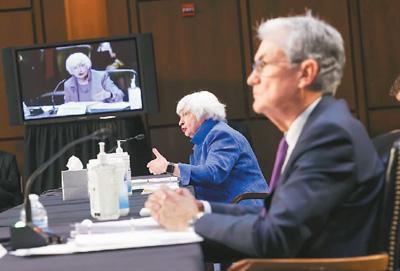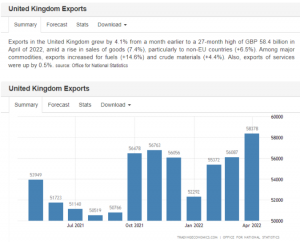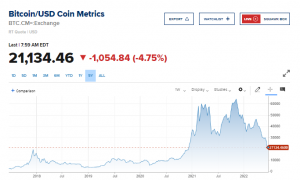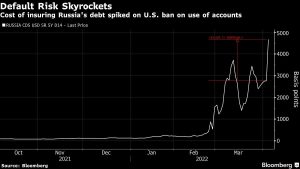
IMF downgrades 2019 global economic growth 】 The IMF released on October 12 in the very new “World Economy outlook review” performance, global economic connection recovery but slow growth, estimated that 2021 growth rate of 5.9%, compared with July forecast 0.1 percentage points lower. In detail, the robust economy will expand by 5.2% in 2019, down 0.4 percentage points from the forecast in July; Emerging environmental trends and developing economies will increase 6.4 percent, 0.1 percentage point higher than the Forecast in July. The U.S., the euro zone, Japan and China grew by 6 percent, 5 percent, 2.4 percent and 8 percent. The global economy is expected to expand 4.9 percent in 2022, unchanged from its forecast in July.
The slowdown in global growth matters because of the slowdown in robust economies as a result of the supply chain link and the slowdown in developing economies as a result of the worsening pandemic situation. However, a few commodity-driven economies are hoping for short-term strength. Overall, global economic connectivity is waking up, but the economic hit of COVID-19 is more permanent, with the rapid spread of the Delta strain intensifying the prospects for continuity. Slowing job growth, rising inflation, tighter monetary policy, a lack of momentum, the debt crisis, and environmental constraints have led to several out of the prospects for the recovery of the economies.
The Federal Reserve released the minutes of its September FOMC meeting on 14 October Beijing time. If the Fed reveals the Taper decision in November, the formal start will be in mid-November or mid-December. It would then cut purchases of Treasuries and securities backed by $5 billion of prime loans by $10 billion a month until the purchases were completed by mid-year. The fed’s imminent monetary policy shift is directly related to the current fundamentals:
1. Inflation is at a nearly 30-year high
The US inflation environment has seen a rebound. In September, the QUARTERLY ADJUSTED CPI growth rate reached 5.4%, the highest in nearly 30 years. The previous high was 5.6% in January 1991. Quarter-on-quarter CPI growth reached 0.4%, 0.1 percentage points higher than the previous figure. Here, the quarterly focus of CPI year-on-year growth reached 4%, similar to the previous value; Quarter-on-quarter CPI growth was 0.2%, 0.1 percentage points higher than the previous estimate.
The driving factor of this round of very tight inflation in the United States is power. In September, power CPI increased by 24.8% year on year, and had reached double-digit growth for 7 months in a row. Lack of global natural gas, coal, crude oil and other resources led to a surge in power costs. Secondly, the breakdown of the supply chain inspired by the epidemic has led to a sharp increase in the cost of transportation. In September, CPI in transportation increased by 16.5% year-on-year, with double-digit growth for six consecutive months. The food and beverage consumer price index (CPI) surged 4.5 percent in September from a year earlier, as the U.S. public stocked up on food due to the pandemic. The excessive issuance of money prompted a large amount of hot money to flow into the real estate industry, and the housing price and the housing cost increased. In September, the year-on-year growth rate of CPI in Rwanda reached 3.9%. As the government slowly relaxed social constraints, the CPI for entertainment and leisure peaked at 3.5% and 3.4%, reflecting the rebound in the cost of leisure and leisure services from a low base.
Global macroeconomic and bulk commodity environment trends Weekly: Fed will start Taper Argentina in the next two months to find hyperinflation
2. The idle environment is better connected
The quarterly unemployment rate was 4.8% in September, not only the fifth month in a row of corrections, but also reaching the Fed’s very newly adjusted unemployment rate expectations (which were revised up from 4.5% to 4.8% in the September Fed minutes). In the week of October 2, the number of americans receiving unemployment benefits was 2.593 million, falling in three weeks. The number of americans applying for unemployment benefits for the first time fell for two weeks to 293,000 in the week ending October 9th.
3, the growth rate of household recovery and spending environment found a rebound
The US manufacturing PMI recorded 61.1 in September, the highest in two months. The non-manufacturing PMI bottomed out at 61.9. After the abolition of community constraints, both manufacturing and unemployment in the United States are in a strong expansion cycle, and the prospect of economic growth is strong.
U.S. spending – driven economies have also seen an improvement in spending conditions over the past two months. In August, the quarterly adjusted retail sales and consumer service sales reached $618.7 billion, with a peak of 0.71%. The University of Michigan’s consumer sentiment index of 72.8 in September, after all, rebounded, suggesting that the American public is gradually taking over the end of the bailout decision, and will subsequently exercise partial work income to win spending.
Global macroeconomic and bulk commodity environment trends Weekly: Fed will start Taper Argentina in the next two months to find hyperinflation
Overall, in November to expose the fed Taper decisions almost nailing on the plate. In December, the official Taper Taper was somewhat more likely, as non-farm job growth in the United States in the last two months was substantially less than expected, while the number of new confirmed cases in the United States still reached 140,000 on a single day on October 13. The Official start of the Taper by the Fed in December will give the US economy an extra month of cushion time.
In September, the euro zone adjusted CPI to 3.4% yoy and 0.5% quarter-on-quarter, with the focus CPI to 1.9% and 0.5%, all four targets higher than the previous values. In particular, the year-on-year CPI growth was the highest in nearly 13 years. The last time inflation reached this high level may have been back in 2008, when the mediation CPI was 3.6 percent in September and the focus CPI was 1.9 percent in October. The ECB raised its price growth rate for the last three years, raising its CPI growth forecast for 2021 to 2.2% from 1.9%, 2022 to 1.7% from 1.5%, and 2023 to 1.5% from 1.4%.
The euro zone’s headline Markit PMI came in at 56.2 in September, falling for the second consecutive month. The manufacturing PMI came in at 58.6, below the 60 mark for the first time in nearly six months. The services non-employment PMI fell to 56.4, marking two consecutive months of decline. The ZEW economic sentiment index for the euro zone recorded 21 in October, down for the fifth month in a row and only a quarter of the very high reading of 20,195 in October. The ZEW index of recent economic conditions in the euro zone recorded 15.9 in October, down 6.6 from the previous reading.
Global macroeconomic and bulk commodity environment trends Weekly: Fed will start Taper Argentina in the next two months to find hyperinflation
Taken together, high inflation makes it more urgent for the ECB to adopt Taper Taper At present, the ECB’s monetary Taper pace will lag behind that of the Fed, and the first half of next year is likely to be formally Taper.
The quarterly unemployment rate in The UK recorded 5.2% in September, which has been revised down for six consecutive months. In September, the number of people applying for quarterly unemployment benefits fell for seven consecutive months to 2113, 000. These two figures show that the working environment in the UK is improving, with the unemployment rate and the number of unemployed continuing to fall. The improvement in Britain’s job performance is directly related to the epidemic prevention and quantitative easing policies.
By 12 October the UK’s full vaccination rate was 66.3 per cent, with two-thirds of the world’s population soon to have been fully vaccinated. From 20193, the UK started the “four steps” to remove the missing seal, until 20197 completely eliminated, allow foreign tourists to enter, open the stadium cinema, so as to greatly promote the development of tourism, catering and other services. At the same time, the Bank of England has maintained quantitative easing forever, which has helped revive the real economy. Britain’s manufacturing and non-employment divisions recorded 57.1 and 55.4 in September, both expanding, as businesses increased the need for new status.
Global macroeconomic and bulk commodity environment trends Weekly: Fed will start Taper Argentina in the next two months to find hyperinflation
Argentina’s CPI rose 52.5% year-on-year in September, the fastest pace in nearly 20 months, marking the 10th consecutive month of rapid four-week growth and the fourth consecutive month of CPI inflation crossing the 50% mark. Inflation has long been a concern in Argentina. The CPI growth rate has exceeded 20% since every year, and the tension has become even more intense since the outbreak of COVID-19.
Its appearance is the Argentine central bank’s endless quantitative easing policy, 20197 M2 year-on-year growth reached 35.4%, and in the last year four degrees and even over 60%, the first 7 months of 2019 printed 972.6 billion pesos of money, high money printing volume caused by activity confusion. Although the dollar is as tight as inflation, the peso exchange rate still peaked at 99.16 from 84.7 on July 4, 20191, depreciating 17% against the dollar.
Global macroeconomic and bulk commodity environment trends Weekly: Fed will start Taper Argentina in the next two months to find hyperinflation
At a deeper level, Argentina’s furniture layout is simple and its manufacturing talent is poor. After the outbreak, the economic damage was even more strained, and the government, with limited financial revenues, experienced huge public spending by printing money. Material scarcity further led to a surge in the cost of food, medicine and public services. In order to avoid the devaluation of their money, the Argentine public abandoned the peso and exchanged it for dollars, euros, pounds and other money for protection. As a result, the Argentine central bank’s foreign exchange reserves were exhausted, and the trend of exchange rate environment plunged into shock.


